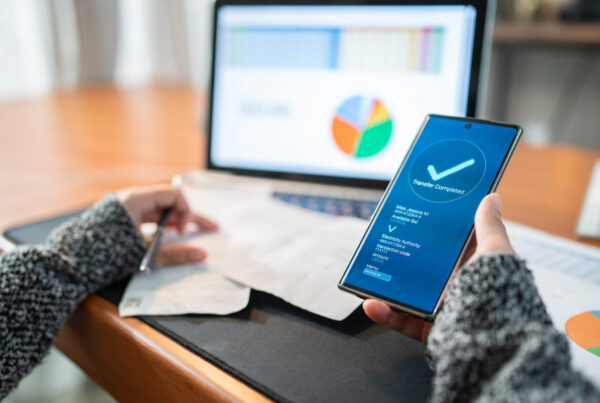Procurement oversees the acquisition of goods and services for a company to function. While procurement and supply chain management are often mistaken for each other, procurement is actually a microcosm of the broad supply chain. Efficient procurement in supply chain will help you reduce costs and boost profitability. In this article, let’s go through the definition and the differences between supply chain and procurement management, the steps involved in procurement, and how technology can level up your procurement process.
What is procurement?

Procurement refers to all activities needed to obtain goods and services you need to run daily business operations. It involves sourcing vendors, negotiating contracts, purchasing items, receiving and inspecting goods, and recording all steps in paperwork.
Procurement can be categorized as direct or indirect procurement:
- Direct procurement is the obtaining of primary goods to produce end products. For a manufacturer, direct procurement can be raw materials and components. For a retailer, it includes items that are purchased from a wholesaler and then resold to customers.
- Indirect procurement refers to the purchases of items needed for day-to-day operations but not directly making up the final products. It includes rent, office supplies, furniture, marketing costs, consulting services, and equipment maintenance.
Procurement isn’t a list of isolated acts — it’s an ongoing process. For instance, you can establish long-term relationships with key suppliers to get the best service and deal for a better price. It helps you reduce procurement costs, and ultimately contributes to higher profit margins. Furthermore, you also need frequent quality assurance checks to analyze the performance of your suppliers to pick the best ones for future purchases.
What is supply chain management?

Supply chain management is the process of supervising a supply chain to ensure a smooth flow of goods and services end-to-end. It includes planning, implementing, and monitoring the transformation of raw materials into products for end customers.
A supply chain is a large network of stakeholders, including manufacturers, vendors, wholesale warehouses, retailers, and logistics providers to produce and distribute products. Therefore, management of the supply chain requires all jobs and services that help move the product from procurement of raw materials to running production and delivering the products to end-users seamlessly.
Serving as the assistance of supply chain management, retail store operations helps deliver the products to customers. Retail management is the process of maintaining the right inventory to meet customer demand while attracting customers to your store, improving the shopping experience, and building their loyalty. It supports the final stage of supply chain management.
Comparison of procurement and supply chain management

Key distinctions between procurement and supply chain management
Procurement and supply chain management are both essential internal functions to accomplish a company’s goals and objectives. They have many things in common:
- Both procurement and supply chain management are primary interfaces with suppliers.
- They both aim to ensure the materials and components purchased are available with the right quality, right quantity, right time, and right price.
- The 2 processes need proactive management to operate the business successfully.
Although there is a strong relationship between supply chain management and procurement, they are not interchangeable. Let’s discover their key differences:
Procurement focuses on input; supply chain management emphasizes output and delivery
Procurement has an input focus to get the raw materials and goods your company needs. To do so, it requires searching for suppliers, reaching a contract and PO, receiving the goods, and conducting payments.
In contrast, supply chain management is an output-oriented process that deals with converting those goods into final products and distributing them to customers efficiently. Therefore, it involves logistics, production, inventory management, distribution strategy, and retail management.
Procurement handles supply obtaining; supply chain management encompasses much more
While procurement in the supply chain aims to build relationships with vendors and acquire high-quality goods and services for your business, the entire supply chain management is much broader. Procurement only covers the first part of supply chain management. The rest of supply chain management includes logistics to attain goods, such as shipping, warehouse management, or cross-docking, as well as the manufacturing process and distribution of final products.
Procurement supports production; supply chain management directs production and distribution
Procurement is a prominent support function for a company’s production. It ensures your business gets the right materials and inventory to produce finished goods. On the other hand, supply chain management tackles how these inputs are transformed into end products and distributed to the customers. Supply chain management is the encompassing process, while procurement is only a subset that provides the inputs for the entire system.
Sourcing and procurement

Sourcing is the initial stage of the procurement cycle. It consists of identifying and evaluating potential suppliers, negotiating terms, and selecting the best-fit vendors with the company’s requirements. Sourcing focuses on the “who” that can offer the supplies, while procurement concentrates on the “what” of supplies and materials.
Purchasing and procurement
Purchasing and procurement are the most often misused pair of words. Purchasing is a part of procurement that happens after the sourcing stage. It includes activities like ordering, expediting, receiving, and fulfilling payments. Purchasing focuses on transactions rather than vendor relationships. While procurement has a proactive approach that begins with determining business needs, purchasing is a reactive approach that simply aims to acquire what is already decided to buy.
Processes of procurement in supply chain management
The procurement process can vary depending on the company’s structure and needs. However, here are the 9 typical steps for procurement in supply chain:
Identify the goods and services needed

A business must start by identifying its needs for a specific good or service. It can be a new item, a restock of low-running inventory, or subscription renewal. In any case, you should create a detailed requirement for technical specifications, materials, quantity, or service characteristics. At this stage, you should consult all business departments relevant to the procurement decision to ensure the purchased goods reflect the practical needs.
Submit purchase request for approval
When you need to procure a significant number of items or services, you must make a formal purchase request. A purchase request informs there is a need for procurement, with descriptions of specifications, quantity, the time frame needed, etc. The manager or director overseeing procurement activities in your company will approve or deny the purchase request. If approved, you can proceed with the next step.
Assess and select vendors
Now knowing what you need to look for, it’s time to find the best vendor. You can send a request for quote (RFQ) or a request for proposal (RFP) to potential vendors depending on the scope of supply. The RFQ and RFP should have clear instructions on what you’re expecting in a quotation so that you can compare apples to apples.
Evaluating suppliers shouldn’t be merely about price, you must consider the vendor’s reputation, quality, speed of delivery, and reliability. You should have at least 3 quotes before making decisions. Usually, technical criteria should be evaluated in the first round, then you have some shortlisted vendors to continue with commercial evaluation.
Negotiate price and terms

After evaluation, you can arrange the suppliers into order. Start with the top one to negotiate terms and conditions, including the scope of work and liability of each party, the pricing and payment terms, as well as the insurance of goods and warranty for services. If the first supplier doesn’t go well, you can move to the second and onwards. Just make sure if you refuse a deal, you have concrete alternative options. Once you’ve agreed on the final terms and conditions, they should be expressed in a contract.
Create a purchase order
After signing the contract, you can generate a purchase order (PO) and send it to the vendor. The PO should identify in detail the exact goods or services needed, the quantity, pricing, delivery method, and the due date for delivery.
Receive and inspect the delivered goods
It’s now the supplier’s turn to fulfill the order. Once you receive the goods, examine them carefully for any defections or damages. Make sure you get the right number and right quality as specified in the PO.
Conduct three-way matching for documents
Before making payment, you should conduct a three-way matching by comparing the PO, the order receipt or packing list, and the invoice. Ensure the goods or services received match the PO and the invoice is authorized and accurate. If there are any discrepancies between the 3 documents, you must resolve them before settling payment.
Approve the invoice and arrange payment
Once the invoice passes the three-way match check, you can arrange payment for the supplier. You should have a consistent account payable process to certify that payments match the invoice and due date. This process will help you manage punctual payments, avoid late fees, and create a good relationship with the supplier.
Recordkeeping
Maintaining records for the entire procurement process is important. These records will help you determine the right price for future reorder, as well as support you with the auditing process and tax calculation. Clear, accurate records are also a solid base to resolve any potential disputes.
Procurement technology

The global procurement software market is growing quickly. A report by Verified Market Research forecasts that the market will be worth $9.5 billion globally by 2028 – a significant increase from $5.5 billion in 2020.
Advanced procurement technology provides a unified procurement platform for all stakeholders to gain real-time visibility, discover savings opportunities, and collaborate effectively with each other. It makes procurement evolve from a tactical function to a strategic function and generates more value for the business.
Here are the top procurement technologies you should adopt for your business:
Cloud-based and customized procurement software
The world is going for cloud-based software that helps companies reduce overhead and gain real-time information sharing. With cloud-based technology, you have more flexibility to access the application from any device and at any time.
In addition, the popularity of cloud computing makes it cost-effective to leverage APIs and microservices. You can integrate various add-ons to your existing system without the need for custom coding. It creates a higher autonomy for businesses to customize the platform as they need, and no longer have to pay for unnecessary features.
Process automation
Procurement automation is about replacing your manual procurement processes with electronics/digital workflows to enhance productivity, minimize labor costs, facilitate the process, and cut out errors.
2 types of automation can be applied to procurement:
- Business process automation (BPA) leverages your procurement process with digitalization to boost efficiency. For example, you can automate purchase orders to streamline operations or automate sales order forms to improve customer experience.
- Robotic process automation (RPA) accelerates manual, repetitive, and low-value tasks like data entry. It helps you save time and minimize human errors.
Data analytics
Today, more and more businesses have realized the importance of data to drive their organizational success. A large amount of data requires a business’s ability to process data in real time, interpret the data, and recognize dominant factors to devise innovative solutions for your business.
A data-driven approach provides insights into your performance and challenges. With data, you can identify procurement aspects that need improvement and better allocate resources to make well-informed decisions. The key to empowering an analytics-driven procurement is to involve analytics in the decision-making process rather than a separate project.
Artificial intelligence (AI) and machine learning in procurement

The application of AI and machine learning in procurement thrives at solving complicated problems that involve large amounts of data. Here are some areas where AI can bring value to the procurement in supply chain:
- Make better decisions: AI can supply timely analytics and insights to make more accurate sourcing decisions.
- Identify new opportunities: AI captures relevant data sources like external market research to inform you of new knowledge. Combined with your internal data, it helps you uncover opportunities for savings, suppliers, or new markets to enter.
- Improve internal operations: AI helps streamline and align business operations across multiple departments or geographic locations.
- Free up time – By automating more routine tasks, AI frees up procurement resources to handle more creative or strategic tasks such as key supplier relationship management.
- Optimize supplier relationships: AI can be used to source new vendors and support contract management by measuring key performance metrics.
- Smoothen procurement process: Machine learning can facilitate review and approval processes, as well as update catalog or contract data, ensuring all information on products, materials, and suppliers is correct.
With the aid of AI, companies can identify business needs, alleviate risks, automate repetitive tasks, facilitate vendor management, track spending, and forecast market demand to improve the bottom line.
Integrate Enterprise Resource Planning (ERP) into supply chain management (SCM)
ERP in supply chain management aims to execute efficient supply aspects (storage and transportation) and market aspects. An ERP system manages all business functions like accounting, project management, risk management, logistics, sales, manufacturing, distribution, and human resources. By integrating ERP into SCM, all data is centralized for easier accessibility. The procurement in supply chain can then be conducted in alignment with other activities and resources. Therefore, the integration of ERP and SCM allows you to deliver products and services to customers with higher speed, quality, and efficiency.
Some values that ERP creates for supply chain management are:
- Consolidate supply chain functions in a single dashboard
- Create better visibility and coordination with suppliers
- Automate supply chain processes to boost productivity
- Eliminate human errors in traditional manual tasks
- Provide valuable reports to make sound decisions
Self-service portals
One of the rising procurement technologies is self-service portals which replace office-controlled with a user-driven solution. This technology is increasingly used for non-critical purchases, as more buyers prefer to interact with suppliers through self-service portals and manage their account information.
With self-service portals taking care of small purchases, you can free up procurement personnel and resources to oversee more complex transactions that require a personal and effective purchasing experience.
FAQs
Is procurement part of the supply chain?
Yes. Procurement is a branch of supply chain management. Procurement’s objective is to acquire the inputs you need to run daily business operations. Supply chain management deals with the transformation of those inputs into finished goods and product delivery to customers.
Why procurement is important in supply chain management
Procurement is important for a business to obtain the right goods, and build strong relationships with suppliers. Good procurement management will help reduce raw material costs and identify better sources of supply. The role of procurement in supply chain management emphasizes how to get the right inputs at the right time and right price.
What does a supply chain manager do?
Supply chain managers monitor logistics activities and keep track of inventory. They analyze operational performance, identify bottlenecks, and resolve issues. Supply chain managers also need to collaborate with suppliers and logistic providers to ensure product movement meets quality and safety standards.













